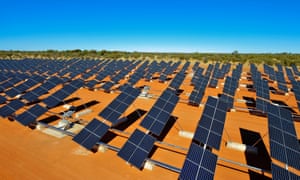
The desert outside Tennant Creek, deep in the Northern Territory, is not the most obvious place to build and transmit Singapore’s future electricity supply. Though few in the southern states are yet to take notice, a group of Australian developers are betting that will change.
If they are right, it could have far-reaching consequences for Australia’s energy industry and what the country sells to the world.
Known as Sun Cable, it is promised to be the world’s largest solar farm. If developed as planned, a 10-gigawatt-capacity array of panels will be spread across 15,000 hectares and be backed by battery storage to ensure it can supply power around the clock.
Overhead transmission lines will send electricity to Darwin and plug into the NT grid. But the bulk would be exported via a high-voltage direct-current submarine cable snaking through the Indonesian archipelago to Singapore. The developers say it will be able to provide one-fifth of the island city-state’s electricity needs, replacing its increasingly expensive gas-fired power.
After 18 months in development, the $20bn Sun Cable development had a quiet coming out party in the Top End three weeks ago at a series of events held to highlight the NT’s solar potential. The idea has been embraced by the NT government and attracted the attention of the software billionaire Mike Cannon-Brookes, who is considering involvement through his Grok Ventures private investment firm.
The NT plan follows a similarly ambitious proposal for the Pilbara, where another group of developers are working on an even bigger wind and solar hybrid plant to power local industry and develop a green hydrogen manufacturing hub. On Friday, project developer Andrew Dickson announced the scale of the proposed Asian Renewable Energy Hub had grown by more than a third, from 11GW to 15GW. “To our knowledge, it’s the largest wind-solar hybrid in the world,” he says.